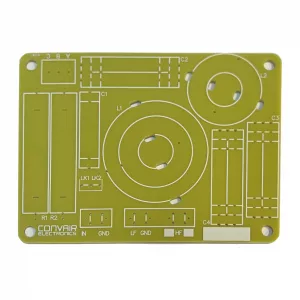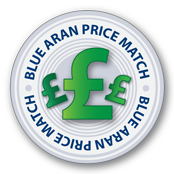 |
| |||||

| ||||||||
Build your own passive crossover using our versatile PCBs We have used our years of experience in the industry to design these PCBs to cover most standard requirements of basic 2 way passive crossovers. We've also created a range of online tools to help you with selecting the right components to build your own crossovers. Read about Crossovers, High Pass and Low Pass Filters here The 9033 board is an extended version of the 9023 board, with an additional capacitor for third order high pass filter circuits.
Dimensions: 135 x 101mm
Low Pass Circuit L1 and C4 form a low pass 2nd order filter. L1 is the low pass inductor, and will usually be physically larger as it will handle the power for the woofer. C4 is for the low pass filters capacitor(s) - in this compact design, the space for the capacitor allows 2 narrow capacitors or one larger capacitor.
High Pass Circuit C2 and L2 form a high pass 2nd order filter. C2 is for the high pass capactitor(s) - as above, in our new design multiples holes are provided to allow one, two or three capacitors to be fitted in close alignment. L2 is the high pass inductor, and typically carries much less power than L1, so will be physically smaller.
Attenuation and EQ Circuit Most tweeters need some attenuation as they are more efficient than woofers, the sound can be balanced by attenuating the power going to the tweeter, we've put together a handy guide, which gives a range of options of resistors to achieve the desired attenuation. Crossover Attenuation Guidance.
In addition, it's possible to compensate for the natural drop off in response of many tweeter by installing a 'bypass' capacitor in C1 which is in parallel with R1, this gives a little HF lift at higher frequencies to correct the frequency response of the compression driver.
Need some help calculating values? Try our Crossover Calculator Select the filter type, frequency and driver impedances and then click the upper 'CALC' button to get the values you need for your crossover. The results will give a value for C1 (correlating to C4 on our PCB) and C2 correlating to C2 on our PCB). L1 and L2 will be as designated on the PCB.
Connecting your Woofer and Tweeter The PCB has the high pass and low pass marked with standard + and - connections. It is very common to connect the Tweeter (High Pass) in reverse phase on a Butterworth crossover as this will often give a more uniform response across the crossover point. It is worth trying both normal phase and reverse phase to see which works best in your system.
Detailed specifications unavailable, please EMAIL the sales office for additional information.
| Other Convair Electronics products similar to Convair Electronics PCB9033 mk2 For 2-way Crossover: |
|

If you find 'Convair Electronics PCB9033 mk2 For 2-way Crossover' at a lower price from an authorised UK dealer, tell us and we'll aim to match it. Request a price match. Terms & Conditions.
